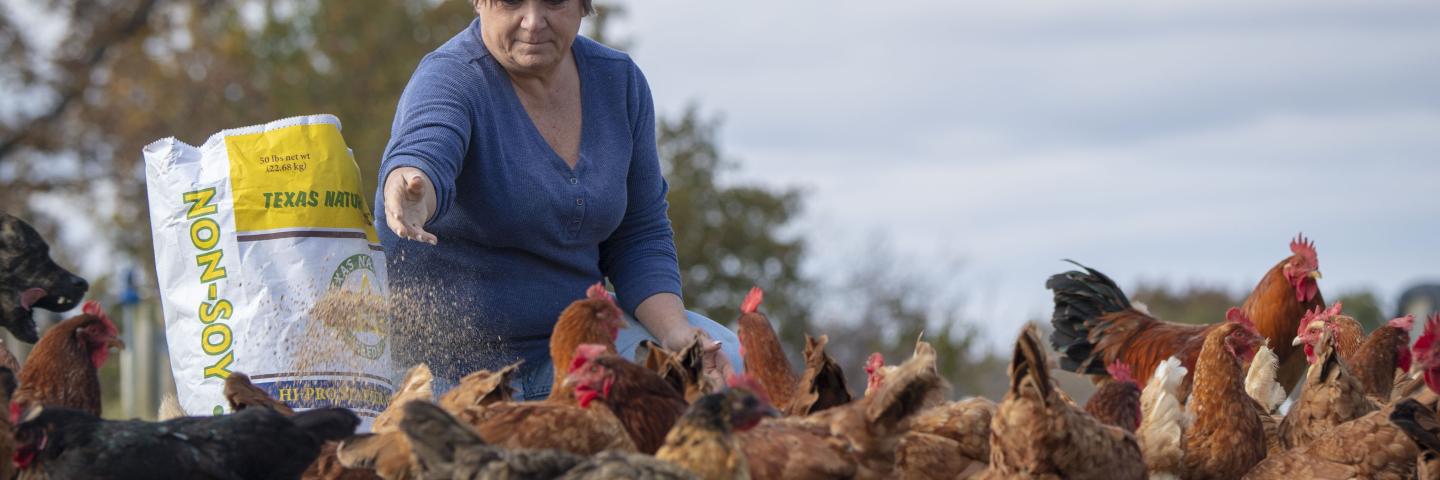Focus on the Farm Blog - Historically Underserved Producers

USDA defines Historically Underserved Producers (HUP) as “socially disadvantaged, beginning, limited resource, and veteran farmers and ranchers.”
USDA defines Historically Underserved Producers (HUP) as “socially disadvantaged, beginning, limited resource, and veteran farmers and ranchers.” Each Farm Bill refines its definition of a Historically Underserved Producer and what that means for programs, but one thing remains: USDA is committed to providing equitable financial and technical assistance. Historically Underserved Producers enrich the U.S. agricultural system with culture and innovation, on top of the food products they already provide. NRCS Idaho is proud to provide equitable programs to all, but especially to Historically Underserved Producers.
There are several different groups who are considered Historically Underserved Producers. These include: Limited Resource Farmer/Rancher, Beginning Farmer/Rancher, Veteran farmers, and socially disadvantaged farmers. Socially disadvantaged farmers include those in minority ethnical and racial categories, such as: Asian/Asian America, American Indian/Native American, Black/African American, Native Hawaiian, Asian-American Pacific-Islander and Hispanic farmers.
Limited resource farmers and ranchers are those who have an annual income which falls under the National Poverty Level for a family of four. In essence, limited resource farmers are those who have little disposable income to spend on innovations for their farm. Beginning farmers and ranchers are just that – farmers or ranchers who have not farmed in the last 10 years. The term veteran farmers refers to farmers who have served in the United States Military, regardless of branch.
Historically underserved producers have several resources available through NRCS. In addition to a diverse array of programs the agency provides through the Farm Bill, NRCS also offers translators and translated documents at no cost to producers. This helps NRCS ensure that our programs are available to all producers, regardless of primary language.
For USDA programs through both NRCS and FSA, Historically Underserved Producers are eligible for early fund distributions and for increased payments. These early distributions and increased payments work to close the gap between those who have been historically underserved and those who haven’t been. Closing that gap is essential in creating a more equitable world, and NRCS Idaho is proud to offer options that work to ensure equity in how we deliver our programs.
Additionally, NRCS Idaho engages in regular consultation meetings with Indian tribes in the state. Each quarter, NRCS Idaho leadership and representatives from the Coeur d’Alene, Nezperce, Kalispel, Kootenai and Shoshone-Bannock tribes to discuss the successes, concerns and needs of their tribal members, and work to form a plan to find resolutions. This open line of communication allows NRCS to better provide support to Tribes, and for Tribes to continue to thrive in Idaho. Nationally, USDA hosts a nationwide consultation session with Tribal nations from all parts of the U.S., during which USDA leaders listen to the concerns and needs of Tribes and what the department could do better to support Tribal agriculture. This meeting is essential and provides the groundwork for increased communication between NRCS and tribes.
NRCS is moving forward with other agreements and meeting in an effort to increase participation in programs among historically underserved communities. The NRCS Equity Conservation Cooperative Agreements are partnerships with organizations around the country who work with or for historically underserved communities. These agreements work to enhance and improve specific areas that are relevant to these communities and incorporate traditional agriculture and land management systems into NRCS conservation practices. In Idaho, NRCS is working with the Coeur d’Alene tribe to extend outreach to tribal landowners with property the Tribe would like to see utilize NRCS conservation practices in order to assist with salmon reintroduction on the reservation and other land owned by the Coeur d’Alene. These co-operative agreements work to directly benefit historically underserved communities and create a solid working relationship between NRCS and the community.
Historically Underserved Producers have a chance to build a relationship with NRCS and enhance their land through financial and technical assistance programs, and NRCS Idaho is proud to work with these communities.
For more information about Resources available to Historically Underserved Farmers and Ranchers, check out this factsheet: Getstarted-HUFR-2022 (farmers.gov).


